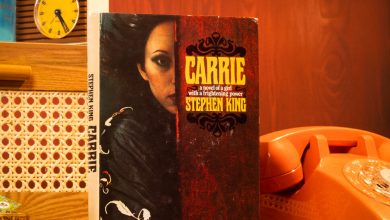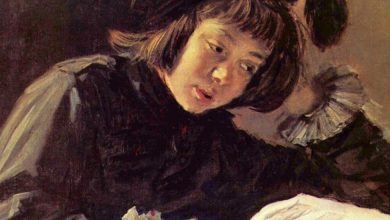Betty Rowland, One of Burlesque’s Last Queens, Dies at 106

She was known as the “Red Headed Ball of Fire,” a title given her for her stature — she was a diminutive 5-foot-1 — and her fiery hair. She found the moniker, which was often shortened to “Ball of Fire,” corny. But Betty Rowland was a burlesque queen nonetheless. A headliner in the racy variety shows’ glory years in the 1930s and ’40s, she worked well into the ’50s.
Ms. Rowland had a languid, balletic style (hers was a gentle grind) and she often threw in an undulating stretch and drop known as a German roll. Her costumes were elegant: She favored long skirts with a side slit to the hip, bandeau tops and evening gloves. After a slow burn, she shed most of her gear; but, like most burlesque stars, she kept her pasties and her G-string on.
One of her signature pieces was called “Bumps in the Ballet,” a spoof of a ballet routine that she liked to introduce to her audience with a bit of patter: “Let’s put a little juice in the Ballets Russes, and give the dying swan a goose. In a classical sort of way, might I put a bump in this ballet?”
Ms. Rowland died on April 3 at an assisted-living home in Culver City, Calif. She was 106.
Her death, which was not widely reported at the time, was confirmed by Leslie Zemeckis, the director of the 2010 documentary, “Behind the Burly Q,” which told the stories of Ms. Rowland and other burlesque stars.
Outside the tribal world of burlesque, Ms. Rowland was perhaps not as famous — or as well paid — as other headliners like Tempest Storm, another redheaded queen, who dallied with John F. Kennedy and Elvis Presley, whose breasts were said to be insured by Lloyd’s of London, and whose earnings at her peak in the mid-1950s were about $100,000 a year (roughly $950,000 today). Ms. Rowland did well, but not that well; in 1945 she earned $500 every two weeks, the equivalent of more than $200,000 a year today.
Still, it was “big dough,” as Ms. Rowland told The Los Angeles Times in 2009, adding that she didn’t squander it on alcohol or cigarettes. “I never smoked or drank,” she said. “It wasn’t in my family. When we were in show business, we took it seriously. We saw a few of them fall by the wayside because of that.”
Ms. Rowland was of an early-vintage of burlesque star: She had a pre-teenage vaudeville act with her sister Rozelle, performing a bit of soft shoe and tap. When vaudeville faded out and its stars migrated to the livelier burlesque shows, Betty and Rozelle went on the road as chorus girls.
Burlesque, sometimes known as “the poor man’s theater,” was, like vaudeville, a grab bag of acts — comedy, acrobatics, a little song and dance — with the added zest of a striptease or two.
Betty had her first star turn when she was just 14 and filling in for a performer who had sprained her ankle. She was so engrossed in the music that she forgot to take off any clothes.
“We teased. That was the name of the game. You become a fantasy to other people,” she told Liz Goldwyn, author of “Pretty Things: The Last Generation of American Burlesque Queens” (2006). But, she added, “people whisper, for heaven’s sake, they say, ‘Do you know what she used to do?’ And they’re saying it like I was a porno worker or something. Well they shouldn’t whisper — I was a dancer. It was the only thing I knew how to do, and I was a success at it.”
Betty Jane Rowland was born on Jan. 23, 1916, in Columbus, Ohio, one of four daughters of Alvah and Ida Rowland. The girls took dancing lessons, and starting when Betty was about 11, she and her sister Rozelle helped out the family financially by performing together in amateur vaudeville shows, and, later, as burlesque stars, touring a bit but mostly based in New York City.
Betty often performed at the flagship Minsky theater in Times Square, among other venues. At the time, the Minsky name was a burlesque franchise and an institution, from which Abbot and Costello, Phil Silvers and Gypsy Rose Lee launched their careers.
Rozelle Rowland found fame as “the Golden Girl,” performing completely nude — but painted head to toe in gold paint. During a tour of London, she met a Belgian baron, Jean Empain, who was one of Europe’s richest men, heir to holdings that included the Paris subway. As the story goes, they fell in love, she got pregnant, and the baron said he’d marry her if she had a son. “Gilded Lily of 14th St. Burlesque Weds Baron,” read a local headline in 1937, the year of her marriage.
Ms. Rowland moved to Los Angeles in 1938, a year after Mayor Fiorello La Guardia put the burlesque houses out of business for corrupting the morals of the city. Her own brushes with the law, however, were rare.
She was fined $250 for lewdness in 1939, after a trial in which a burly cop imitated her act on the witness stand, leaving the court weak with laughter. In 1952, she was jailed when a box-office worker at a theater where she was performing failed to recognize two vice squad officers who were in the habit of attending the shows for free. As payback, they arrested Ms. Rowland and the theater manager; a judge sentenced them both to four months in jail. A local columnist took up Ms. Rowland’s case, pointing out that the sentence was as severe as that given the perpetrator of a recent shooting, and she was released after three weeks.
In 1943, Ms. Rowland sued the Samuel Goldwyn Company for using her stage name as the title of the 1941 film “Ball of Fire,” a screwball comedy starring Barbara Stanwyck as a mouthy nightclub singer on the run, and for breech of contract. Ms. Rowland said she had been hired as a technical adviser to Ms. Stanwyck but was never paid. Ms. Rowland received a lot of publicity for her case, but she did not prevail.
Burlesque lost its luster in the postwar years. By the early 1960s, the crowds were seedier, the clubs grubbier and the production all but gone. Soon there were only hard-core strip joints, and many of the former burlesque theaters were playing pornographic films. Ms. Rowland was disdainful of her crude successors.
“What is a lap dance, anyway?” she asked a reporter in 1997.
Ms. Rowland had a long-term relationship with a fellow Minsky burlesque star, a comedian named Gus Schilling — a baggy-pants top banana, in burlesque parlance. Newspapers often described the couple as married, but Ms. Rowland told Ms. Zemeckis and others that although she and Mr. Schilling lived together, he was married to someone else. Her marriage in 1956 to Owen S. Dalton, a lumber merchant, ended in divorce in 1963. She leaves no immediate survivors.
In the late 1960s, Ms. Rowland inherited an interest in a Santa Monica bar called Mr. B’s. In the mid-1990s, she lost control of its ownership to investors, who renamed the place the 217 Lounge. She stayed on as a hostess, and was still working there in 2009, at the age of 93. She had filed for bankruptcy protection in 2003.
Ms. Rowland stopped dancing when she married Mr. Dalton. But after her divorce, she came out of retirement for a week or so in 1966, performing at a theater in downtown Los Angeles. (At the time, she told The Los Angeles Times, she was writing her memoirs, with the working title “Ham and Legs.” Sadly, no manuscript was ever discovered, said Ms. Zemeckis, who bought Ms. Rowland’s costume collection to help with her finances in her last years.)
“The theater was dingy beyond description, the band reduced to a drummer and a pianist and the midweek audience painfully spare,” The Los Angeles Times wrote of that 1966 performance. “Yet to the unsteady strains of ‘Hello, Dolly!’ came out the petite Miss Rowland, as regal and redheaded as ever, to prove that experience can triumph over youth, that grace and humor can beat the passing of time to a draw.”
Kitty Bennett contributed research.





